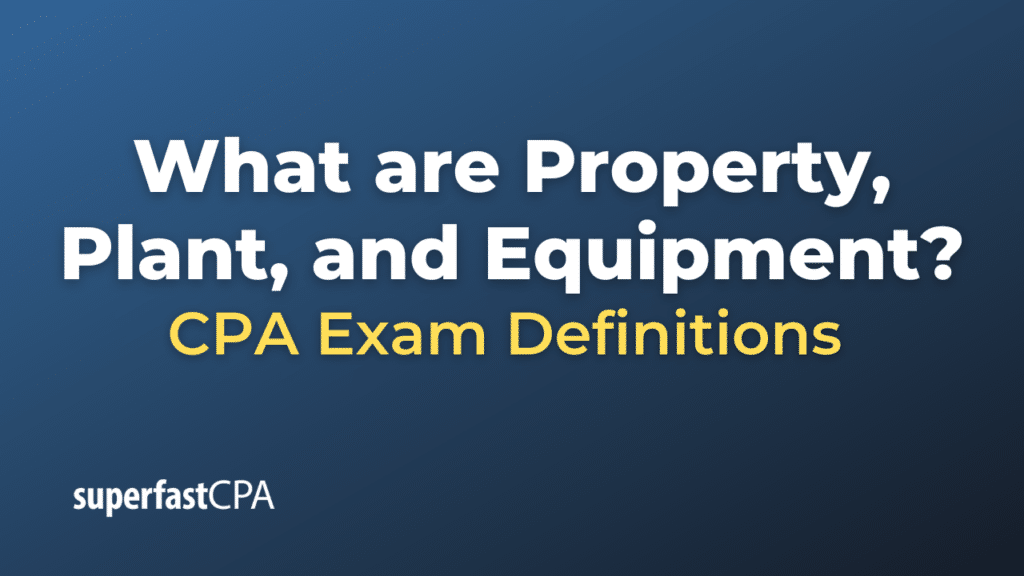Property, Plant, and Equipment
Property, Plant, and Equipment (PP&E), also known as fixed assets, are long-term tangible assets that a company owns and uses in its operations to generate income. They are expected to provide economic benefits for a period longer than one year. PP&E typically includes the following:
- Property: This can include land and buildings that the company owns. The property is usually used to conduct operations, such as offices, manufacturing plants, and warehouses. In the case of land, it is not depreciated because it is considered to have an indefinite useful life.
- Plant: This refers to industrial facilities such as factories and power plants. These assets are subject to depreciation over their useful life.
- Equipment: This can include machinery, vehicles, computers, office furniture, and any other equipment the company uses in its operations. These assets are also depreciated over their useful lives.
PP&E is a key item on the balance sheet and is important for many businesses. The cost of these assets is not expensed immediately on the income statement, but is instead capitalized and depreciated over the expected life of the asset. This process matches the cost of the asset with the revenues it helps to generate over time.
Furthermore, understanding a company’s investment in PP&E can give investors a better idea of the company’s capital expenditure and growth strategy. A high level of PP&E may indicate a significant investment in the business and a long-term growth strategy, but it also could indicate slower cash flow and less financial flexibility.
Example of Property, Plant, and Equipment
Let’s consider a fictional manufacturing company, “Mega Manufacturing Inc.”
“Mega Manufacturing Inc.” has the following assets:
- Property: It owns a piece of land valued at $2,000,000 and buildings (factories, offices, warehouses) valued at $8,000,000.
- Plant: It has a manufacturing plant with all the machines, production lines and associated technology valued at $5,000,000.
- Equipment: It has computers, office furniture, company cars and other miscellaneous equipment valued at $500,000.
So, in the balance sheet of “Mega Manufacturing Inc.”, the total value of the Property, Plant, and Equipment (PP&E) would be calculated as:
Property ($2,000,000 land + $8,000,000 buildings) + Plant ($5,000,000) + Equipment ($500,000) = $15,500,000
This $15,500,000 would be the initial value of PP&E reported on the balance sheet. However, each year, a portion of the value of the plant and equipment (and the buildings part of property) will be depreciated and the carrying amount of PP&E will reduce by the depreciation expense, reflecting the wear and tear on these assets over time. Land is not depreciated as it is considered to have an indefinite useful life.
Keep in mind that these numbers are greatly simplified for the purposes of this example. In reality, a company’s PP&E could consist of many different types of assets, each with their own methods and rates of depreciation, and there could be additional complexities if assets are bought or sold during the fiscal year.












